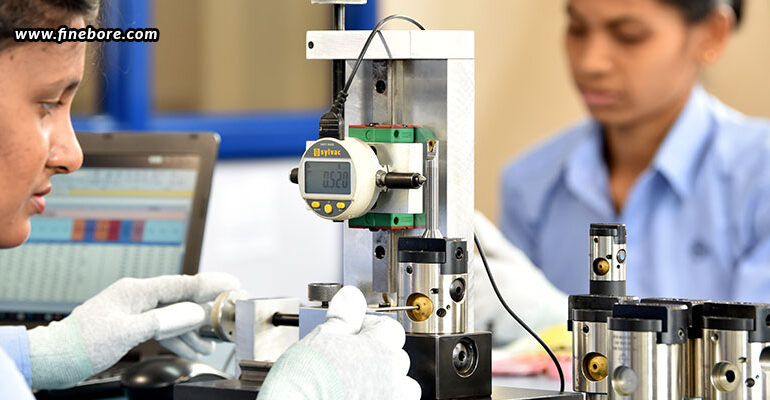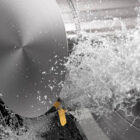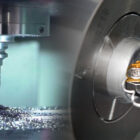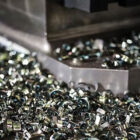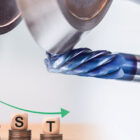The importance of a boring bar in precision machining, while creating big, deep holes, and enlarging already-existing holes, is also to guarantee that crucial dimensions are met with remarkable accuracy. However, a boring bar needs care and attention to operate at its best. Routine inspection and maintenance is crucial to help your boring bar last longer and continue to operate with the high level of precision it was made for. Let’s help you with a detailed planned maintenance checklist for your boring bar in the blog below.
Visual inspection
The first line of defence in preserving the boring bar’s quality and lifespan is visual inspection. Regularly checking the boring bar for wear, damage or chipping is crucial, especially on the cutting insert. Insert condition and toolholder are the two major items to check for. The cutting insert must be examined for any signs of wear, chipping, or damage, and inserts should be changed as soon as they begin to exhibit considerable wear because worn inserts can cause errors and produce a subpar surface finish. Additionally, the toolholder needs to be checked for wear or damage that could compromise clamping and alignment. It is crucial to make sure the toolholder is securely held in place, and devoid of any obvious problems that could compromise its performance.
Insert replacement
For the purpose of obtaining the appropriate dimensions and surface finish, inserts are responsible to perform the actual cutting. To maintain accuracy, insert replacement must be done often. It has to be replaced if it begins to wear, chip, or cut less effectively. Worn inserts can cause deteriorating surface finish and dimensional errors. It’s crucial to select the appropriate insert type and size for the material and application when replacing inserts. To prevent any play or movement during cutting, the new insert must be carefully inserted according to the manufacturer’s instructions, making sure it is positioned correctly and securely in the toolholder.
Toolholder examination
The performance and longevity of the boring bar are greatly influenced by the toolholder. Regular inspection is necessary to spot any wear or damage that could compromise clamping and alignment. Ensuring that the toolholder is correctly aligned with the spindle, and that the clamping mechanisms and components in the toolholder are in good working condition helps reduce inaccuracies in hole dimensions and provides a secure grip on the boring bar and insert. It is also crucial to follow the manufacturer’s recommendations for lubrication intervals and type, if the toolholder includes components that require lubrication.
Runout check
The performance of the boring bar can be significantly impacted by spindle or toolholder runout. Maintaining precision requires routinely checking for runout. Spindle or toolholder runout can be measured using a dial indicator or runout gauge. The size and surface smoothness of the bore may be uneven as a result of excessive runout. If such a runout is found, the problem should be fixed right away. This can entail realigning the spindle or changing out worn-out or damaged toolholder or spindle parts.
Cleaning
Cleanliness is a vital aspect of boring bar maintenance. It’s crucial to keep the boring bar and toolholder clean to avoid problems that can compromise alignment and performance. Chips and debris from the boring bar and toolholder must be cleaned up after each use. This is essential to avoid obstacles that can cause alignment issues. Additionally, any coolant residue should be removed because it may influence how the boring bar and toolholder connect. Reduced clamping force and increased play may be caused by such residue. The boring bar needs to be kept clean, dry and away from pollutants and moisture that could lead to rust or other damage when not in use.
Toolholder maintenance
Toolholder maintenance is crucial because the toolholder is the supporting structure of the boring bar system, ensuring stability and precise performance. To keep it in good shape, the toolholder should be routinely checked for signs of wear, damage, or degradation. Any problems should be fixed right away. Set screws and other clamping systems, such as collet systems, must be in good working order in order to prevent insert movement and errors. The condition of each component should be checked for wear or damage, and any found must be replaced right away.
The performance of a boring bar depends on routine inspection and maintenance. One can assure the durability and accuracy of a boring bar by adhering to the aforementioned maintenance checklist. A boring bar may continue to deliver accurate results with the right maintenance, assuring the success of machining tasks. This is why it is essential to purchase from reliable and genuine precision boring bars manufacturers in Bangalore, one like FineTech Toolings, to get products that call for better performance and lesser maintenance.

